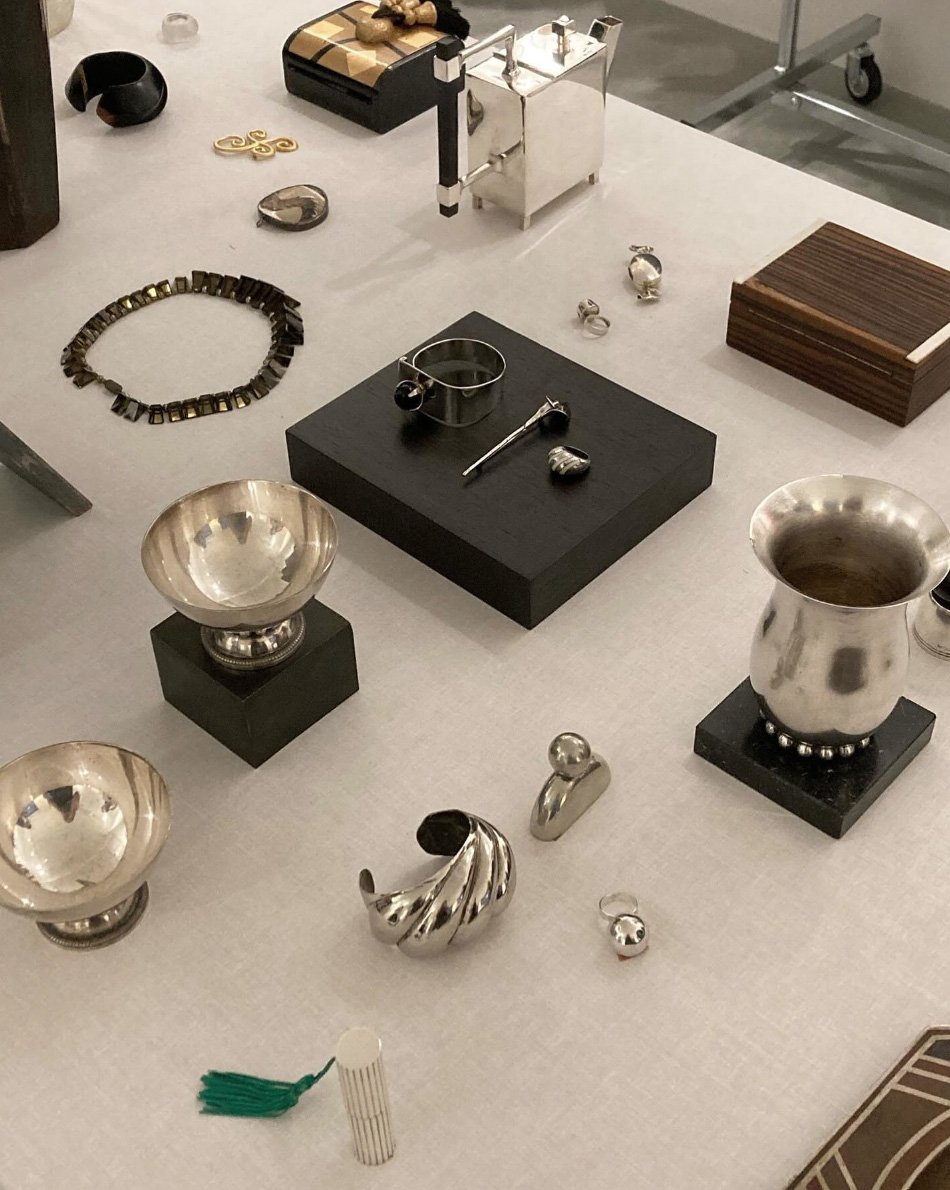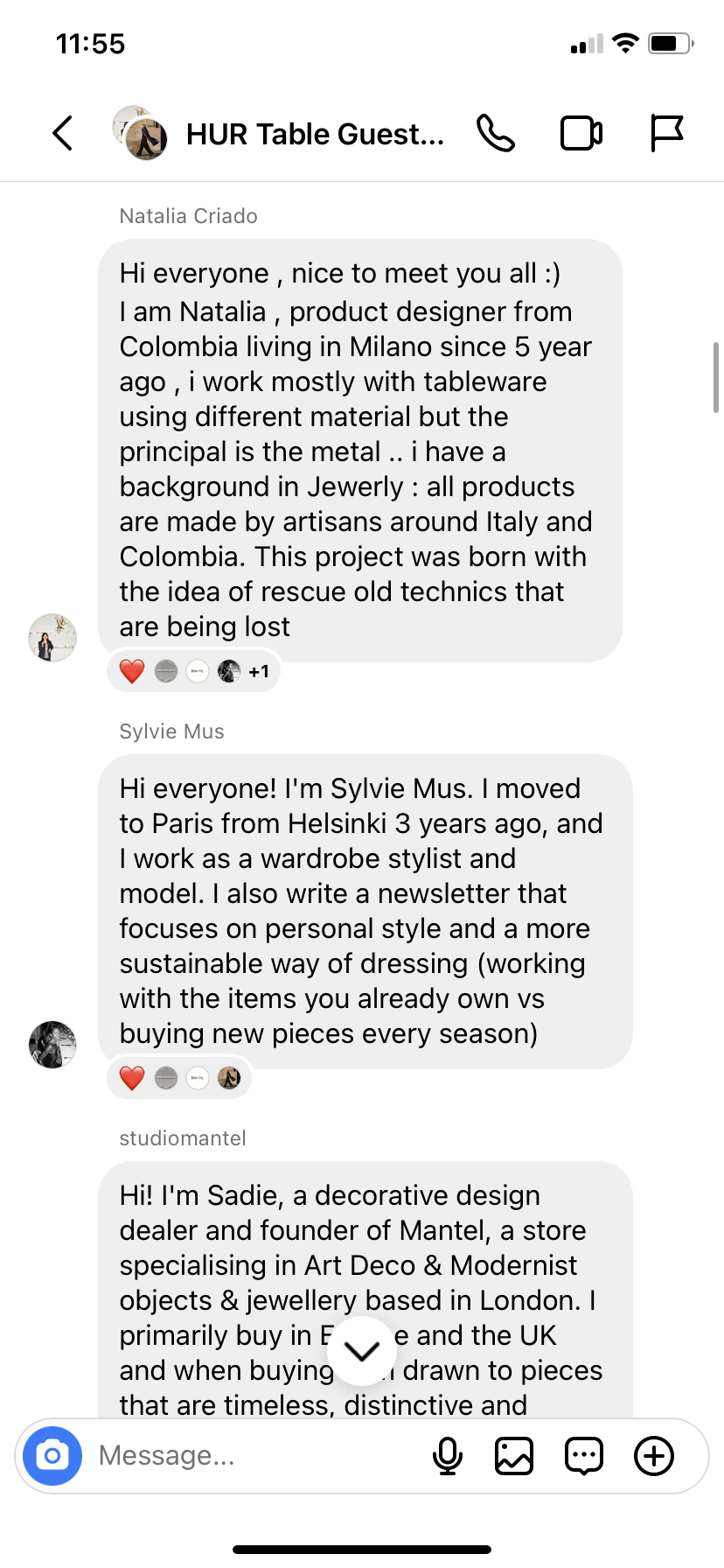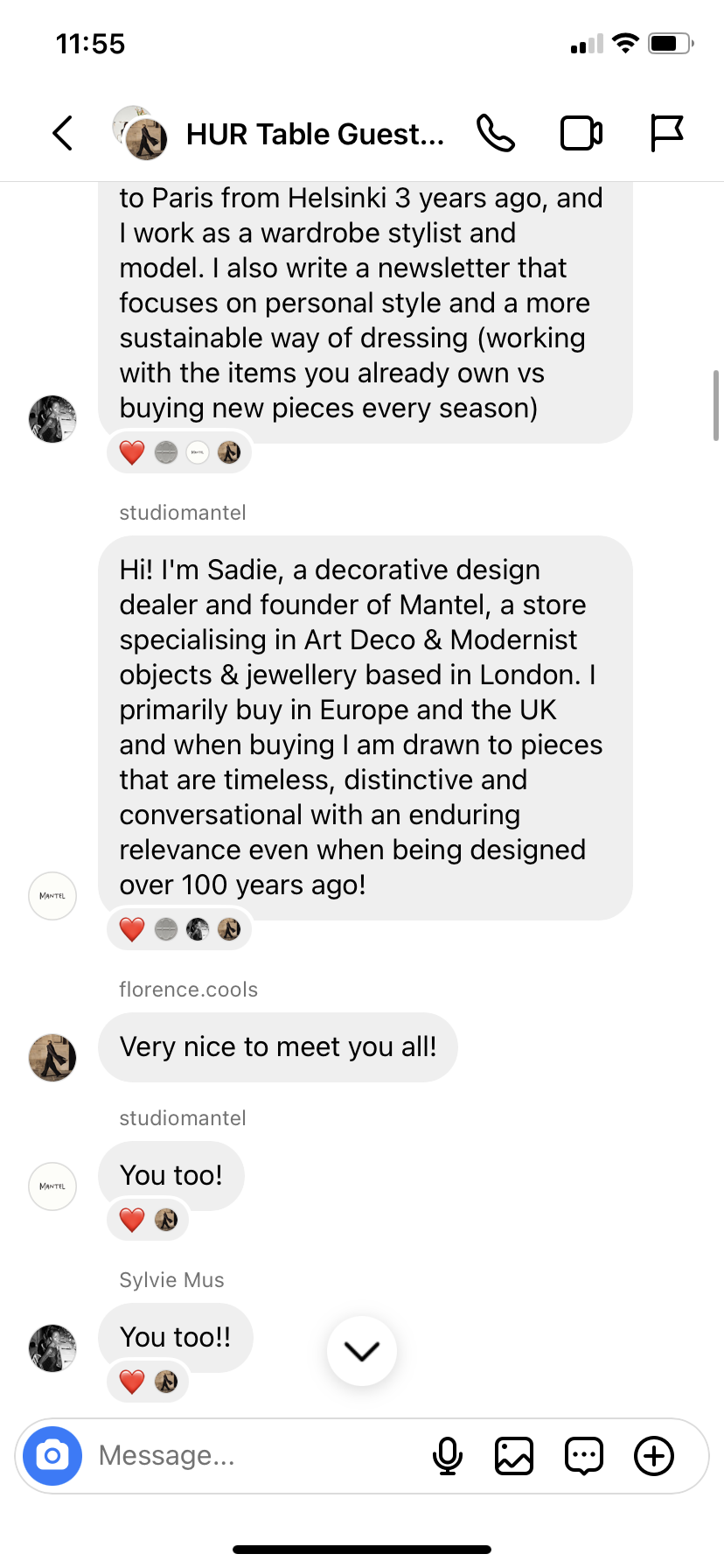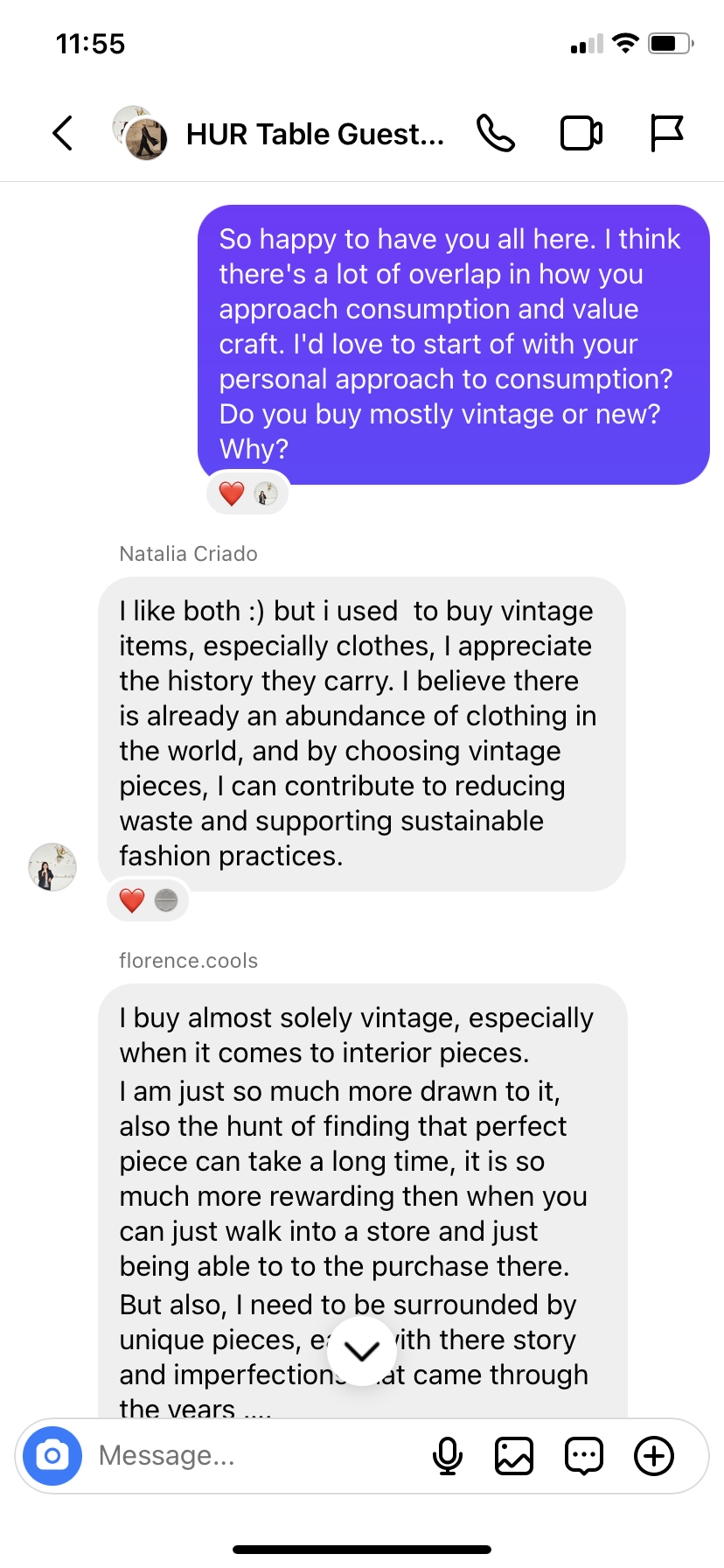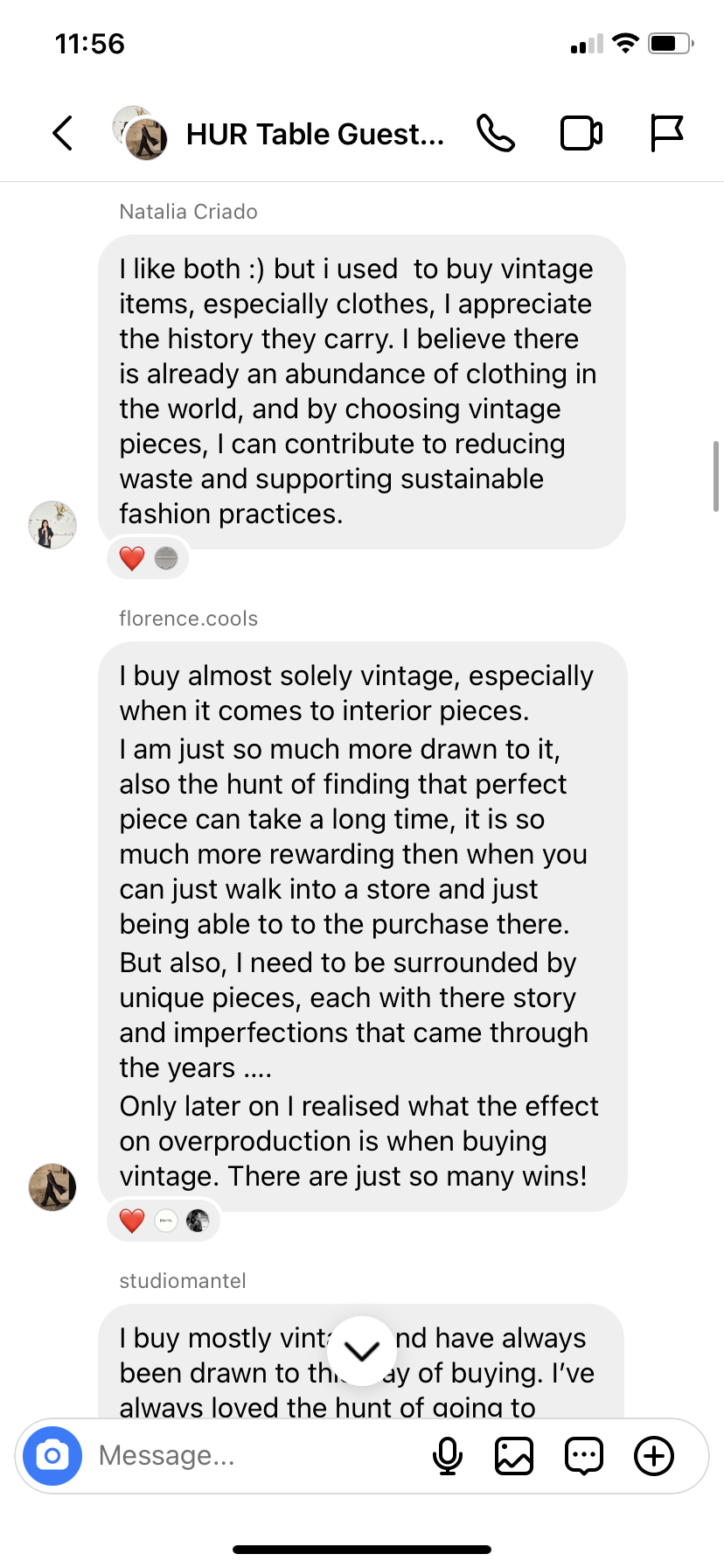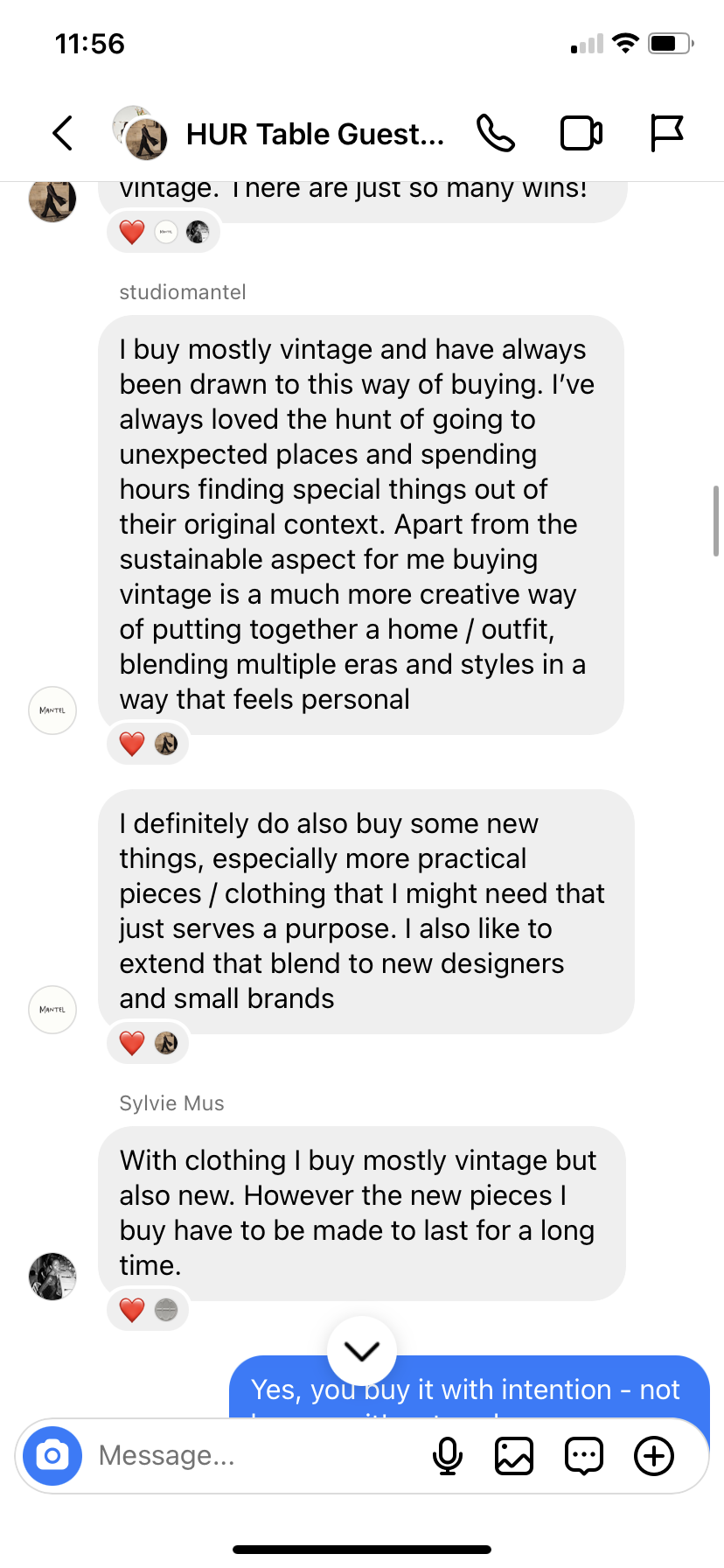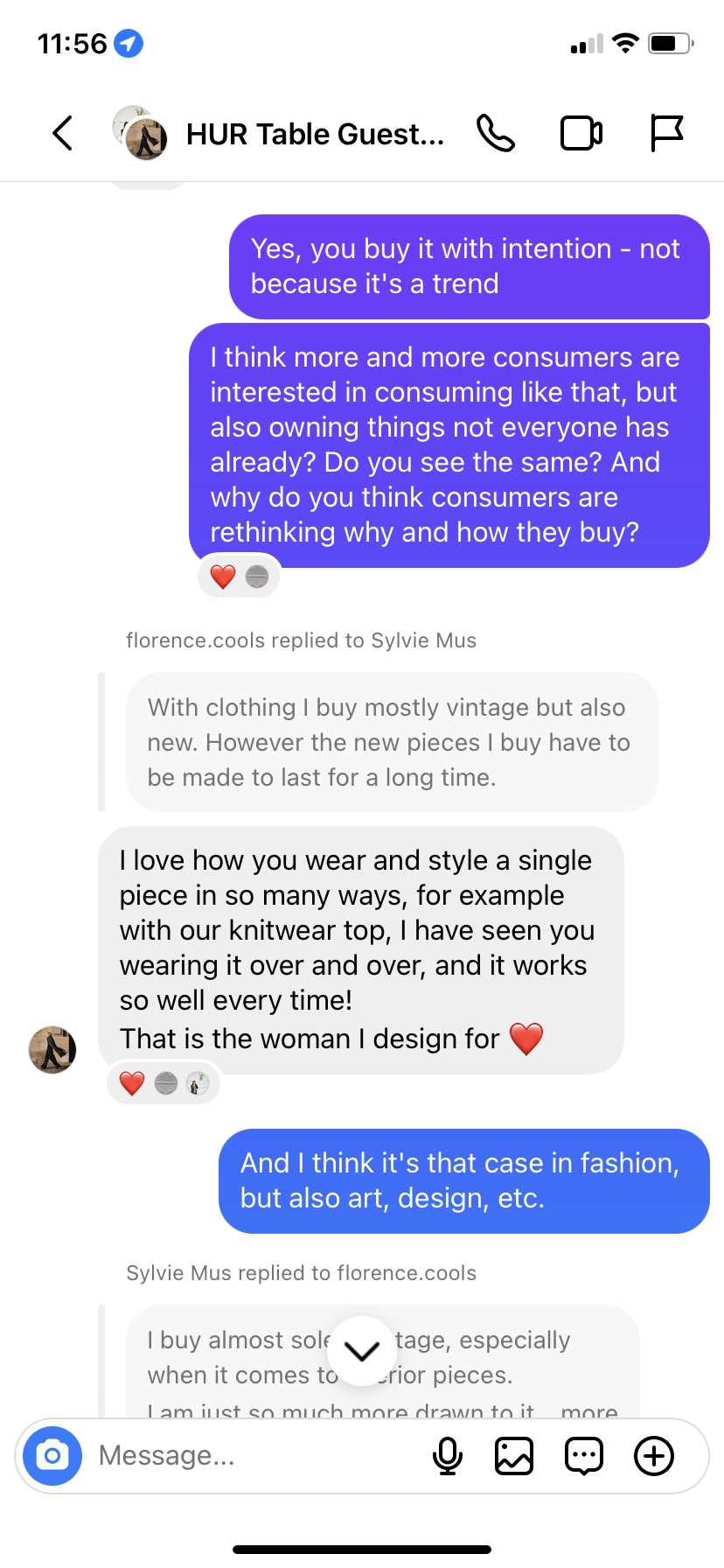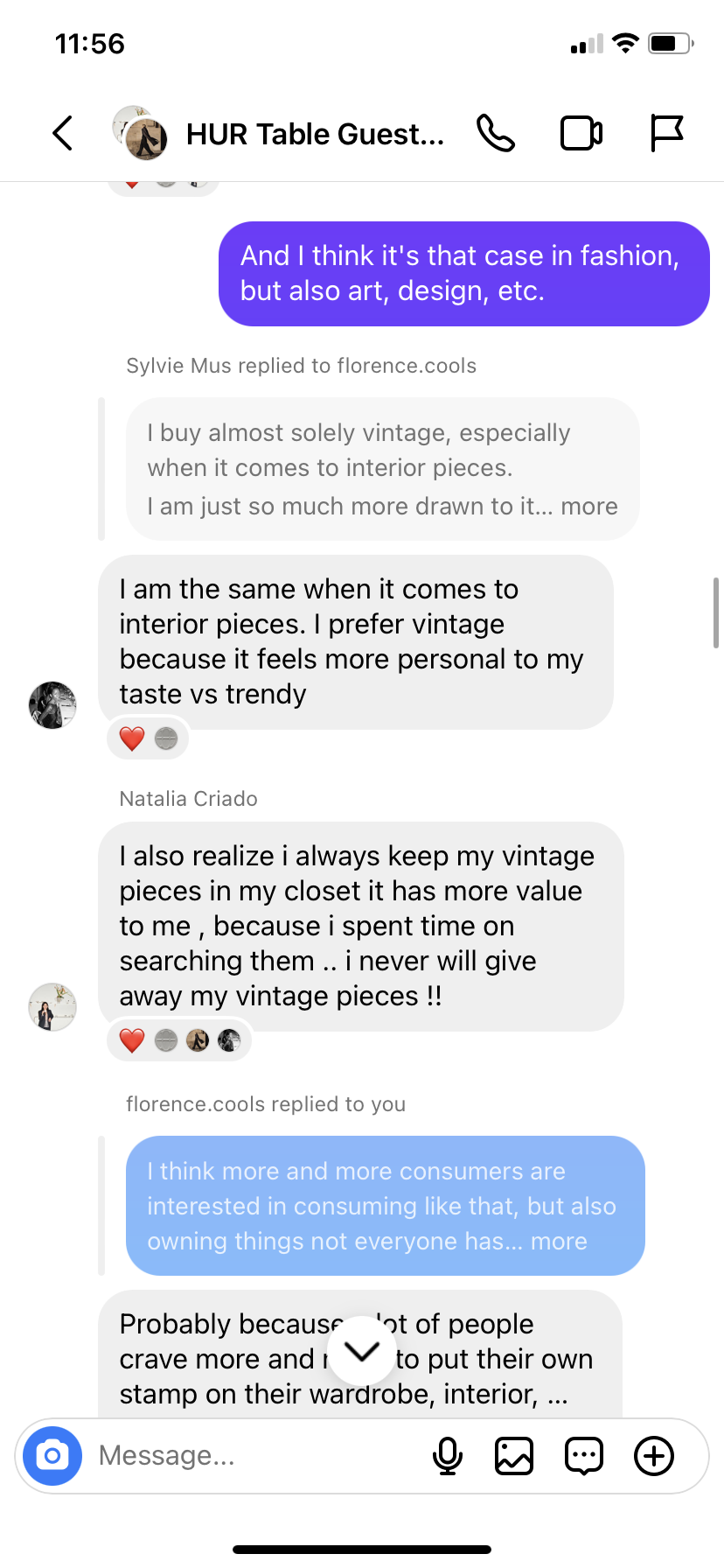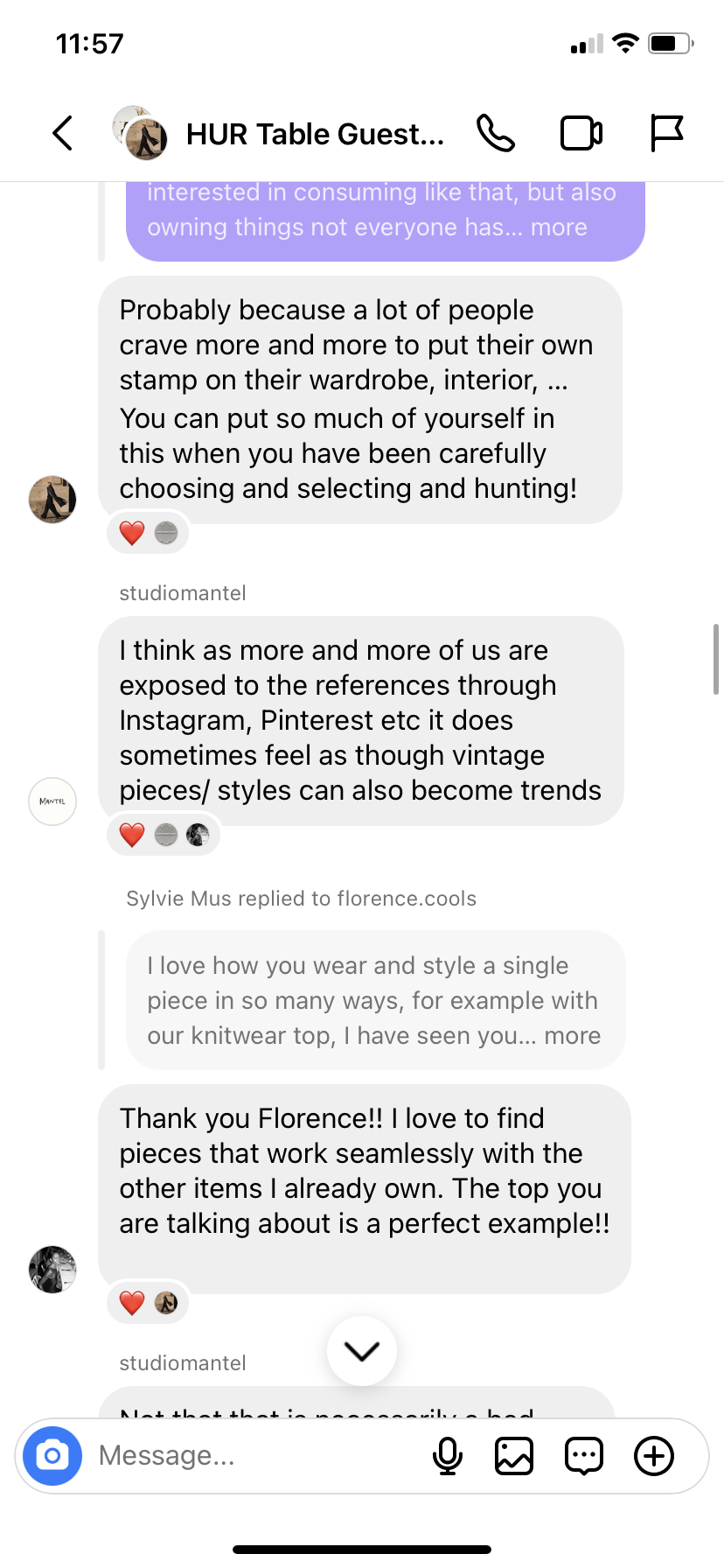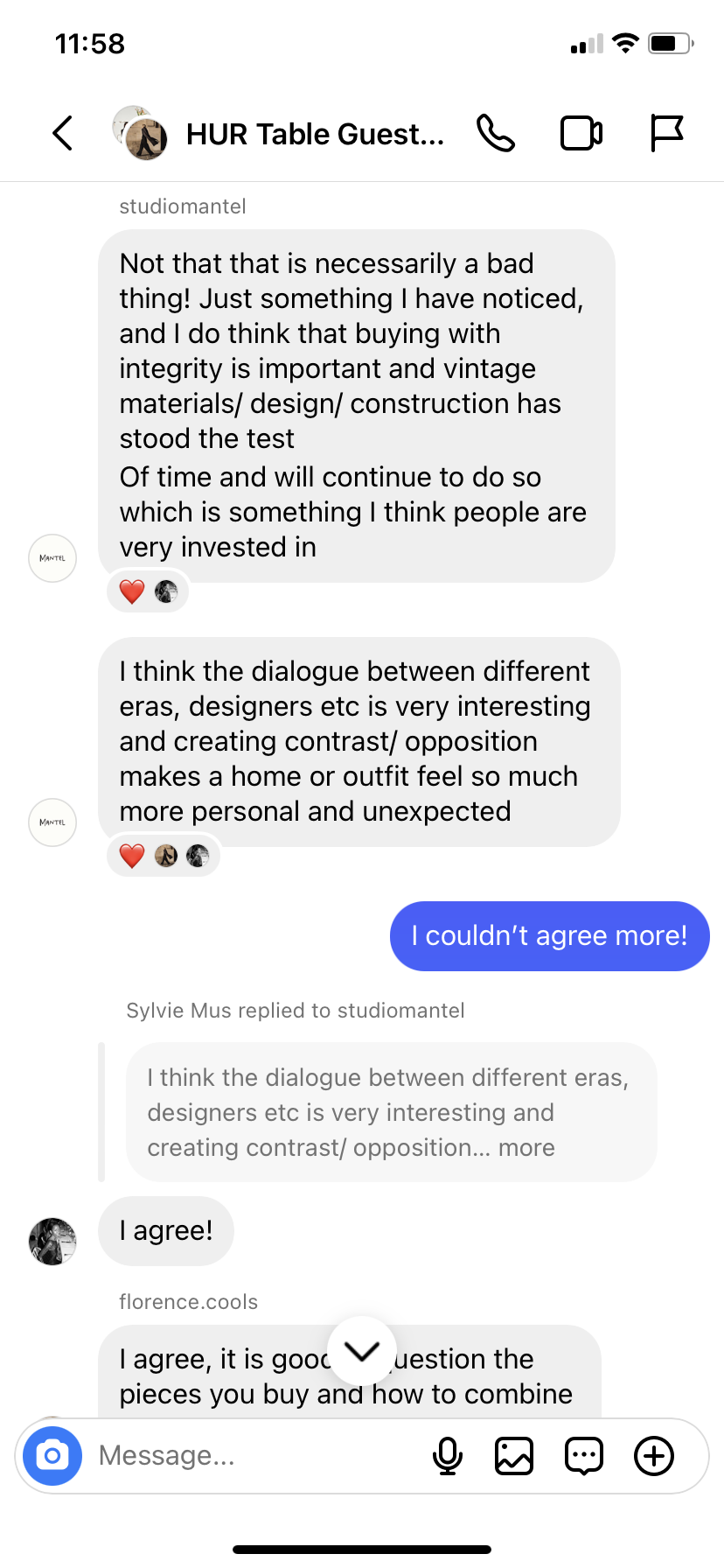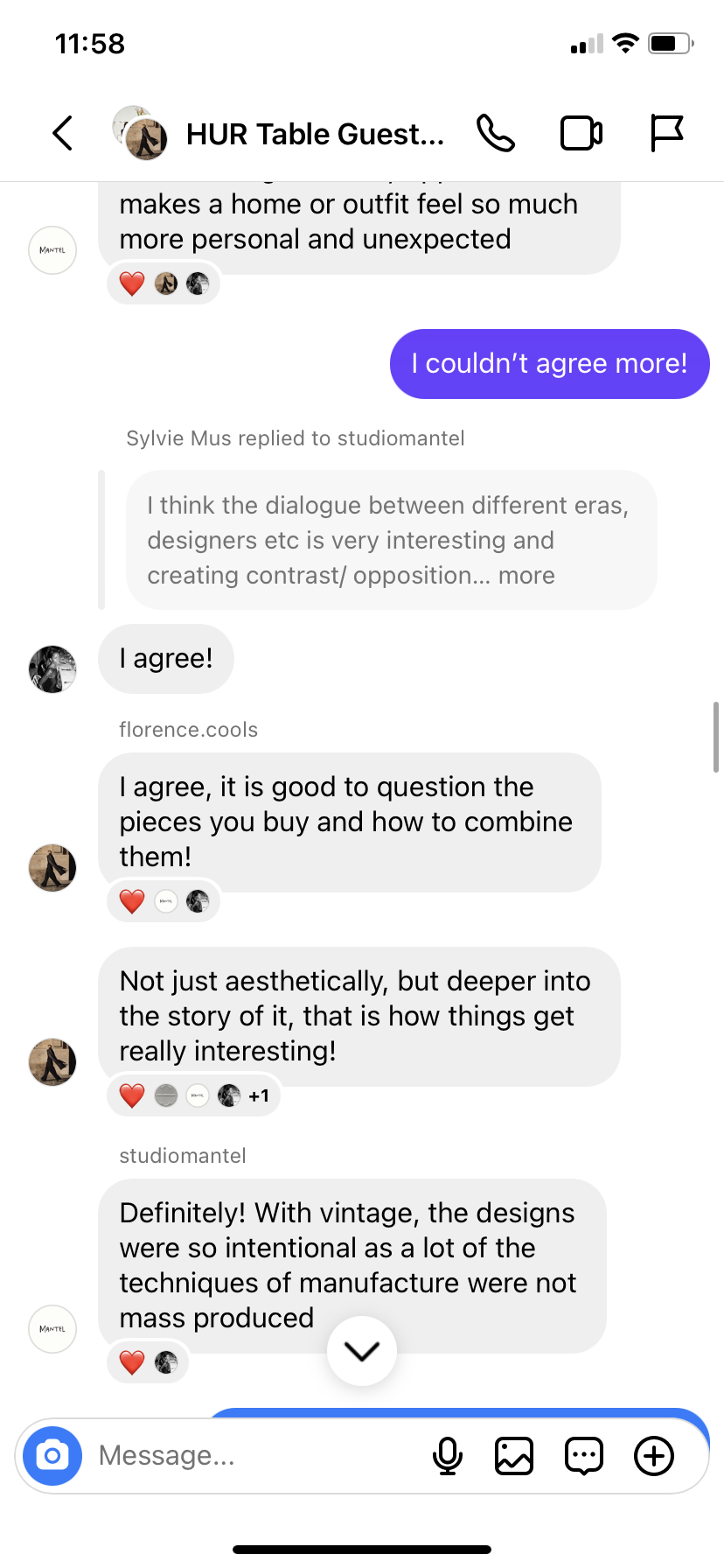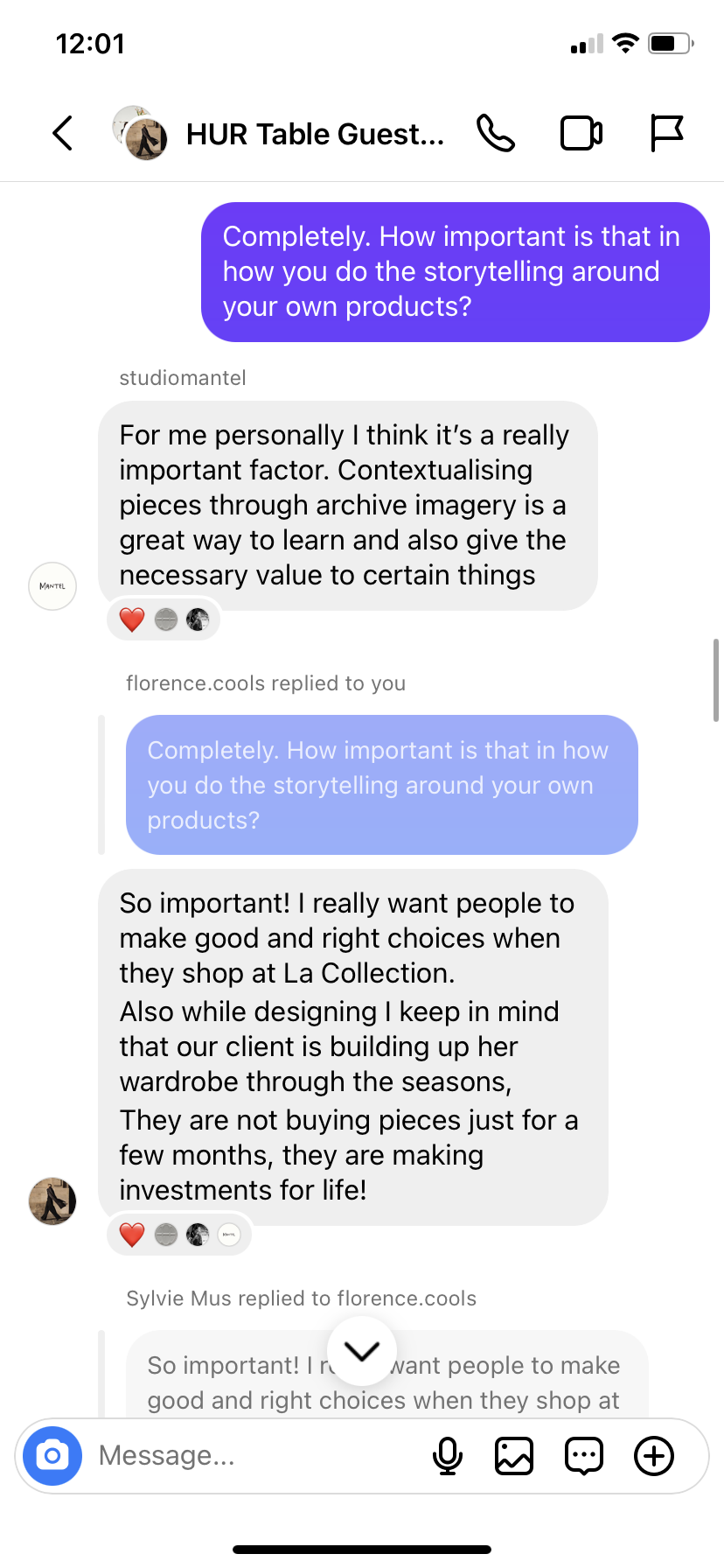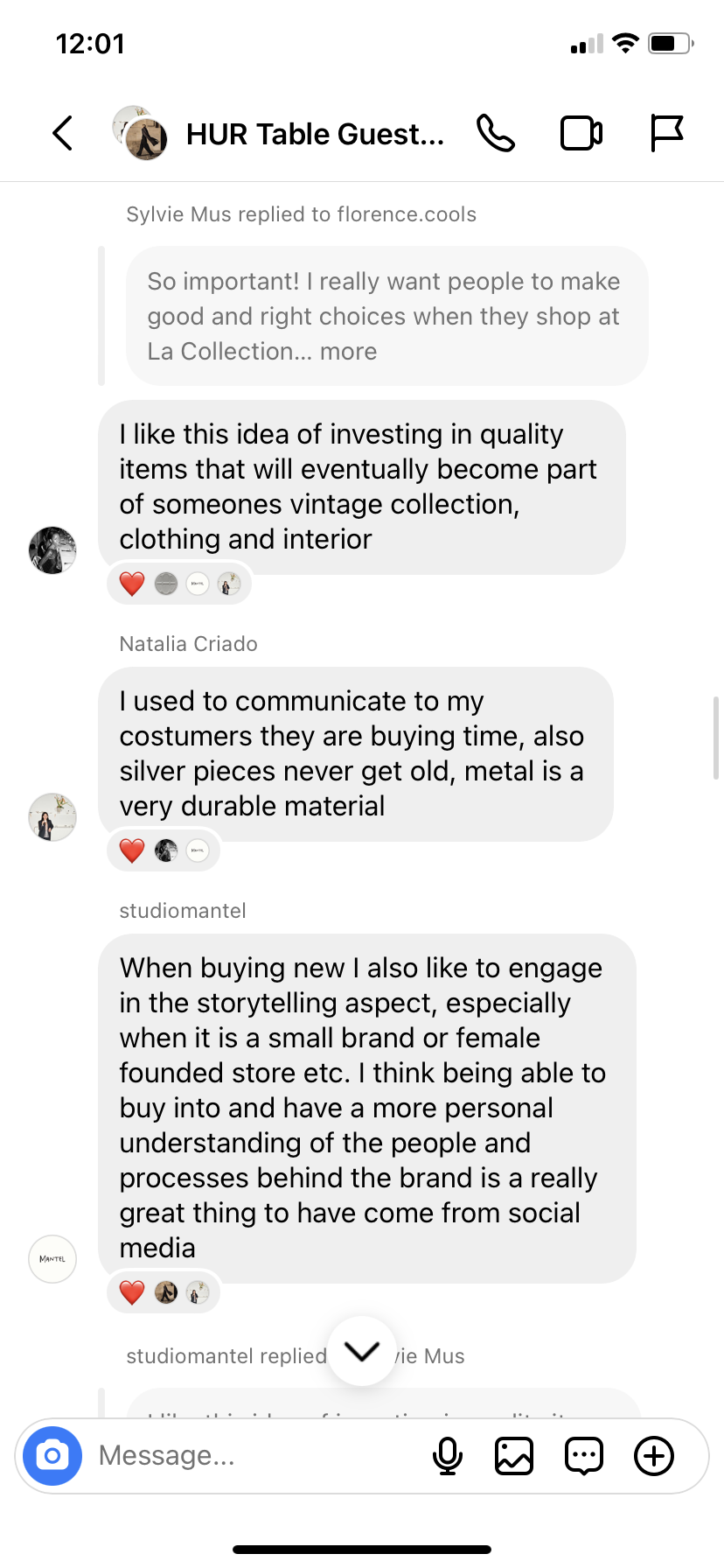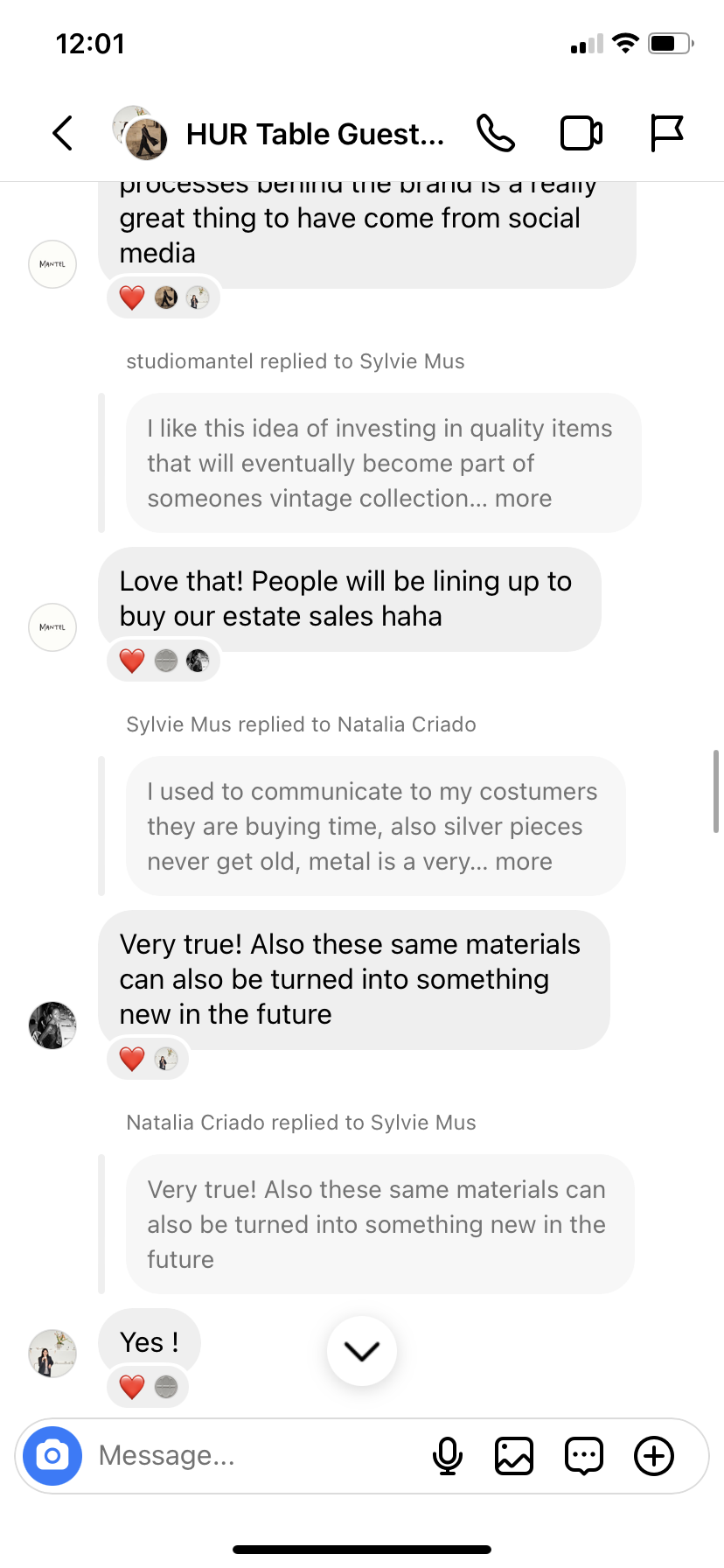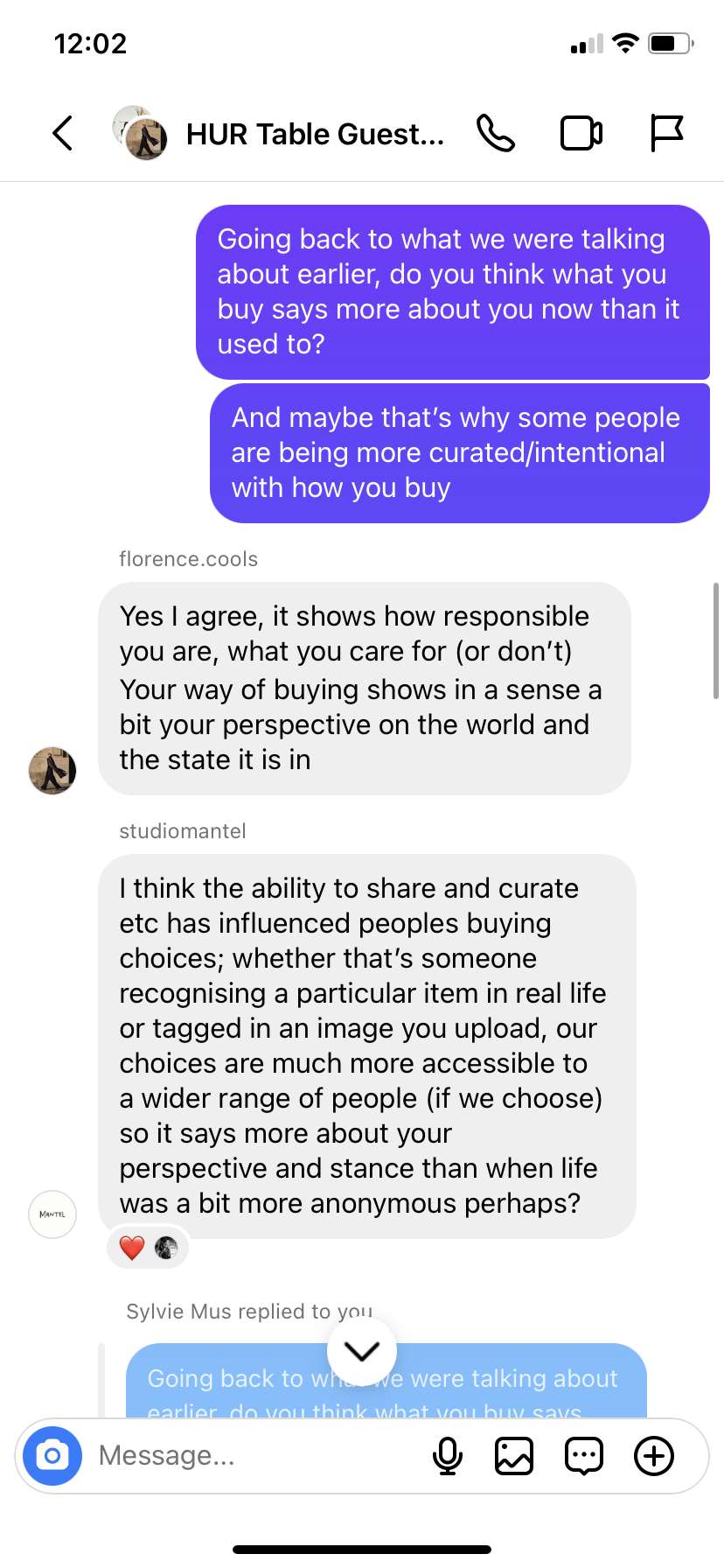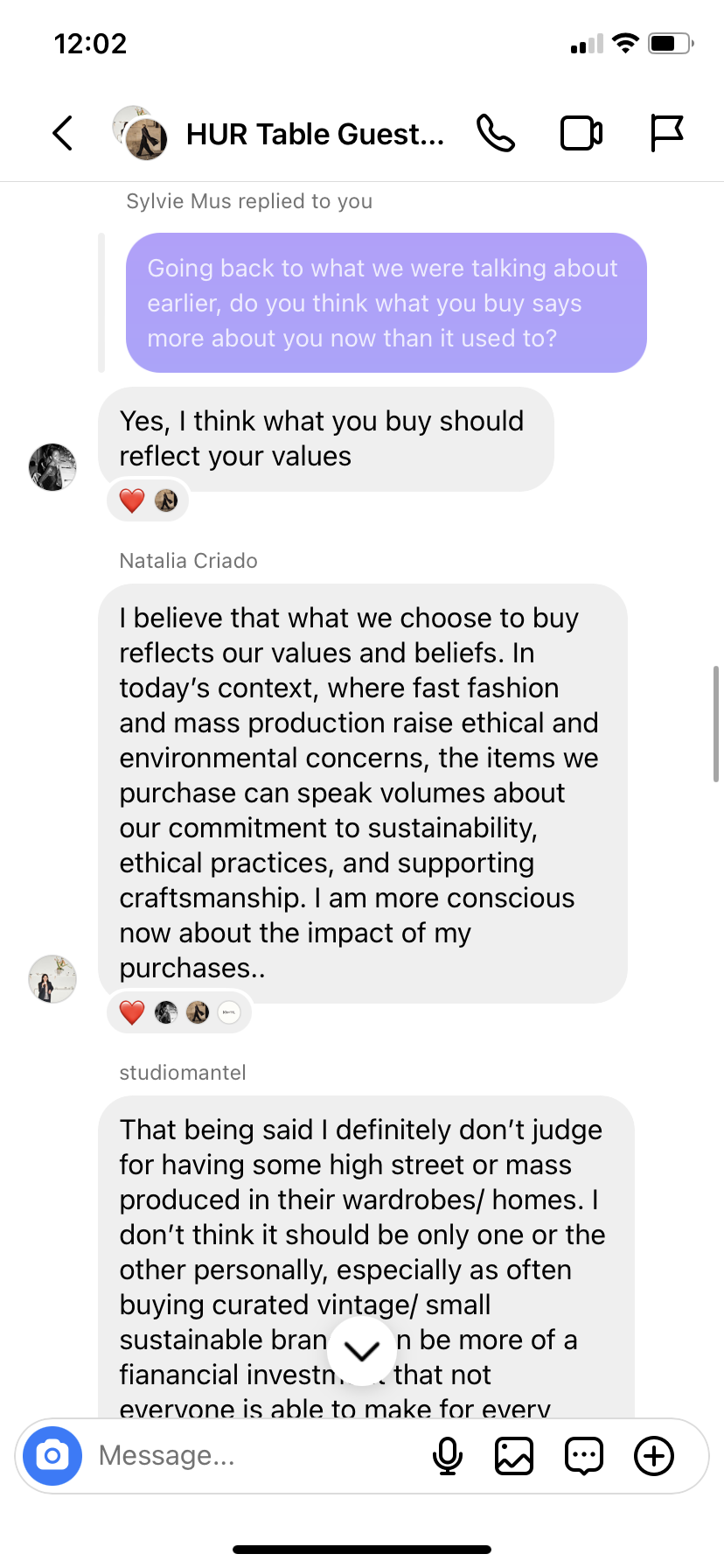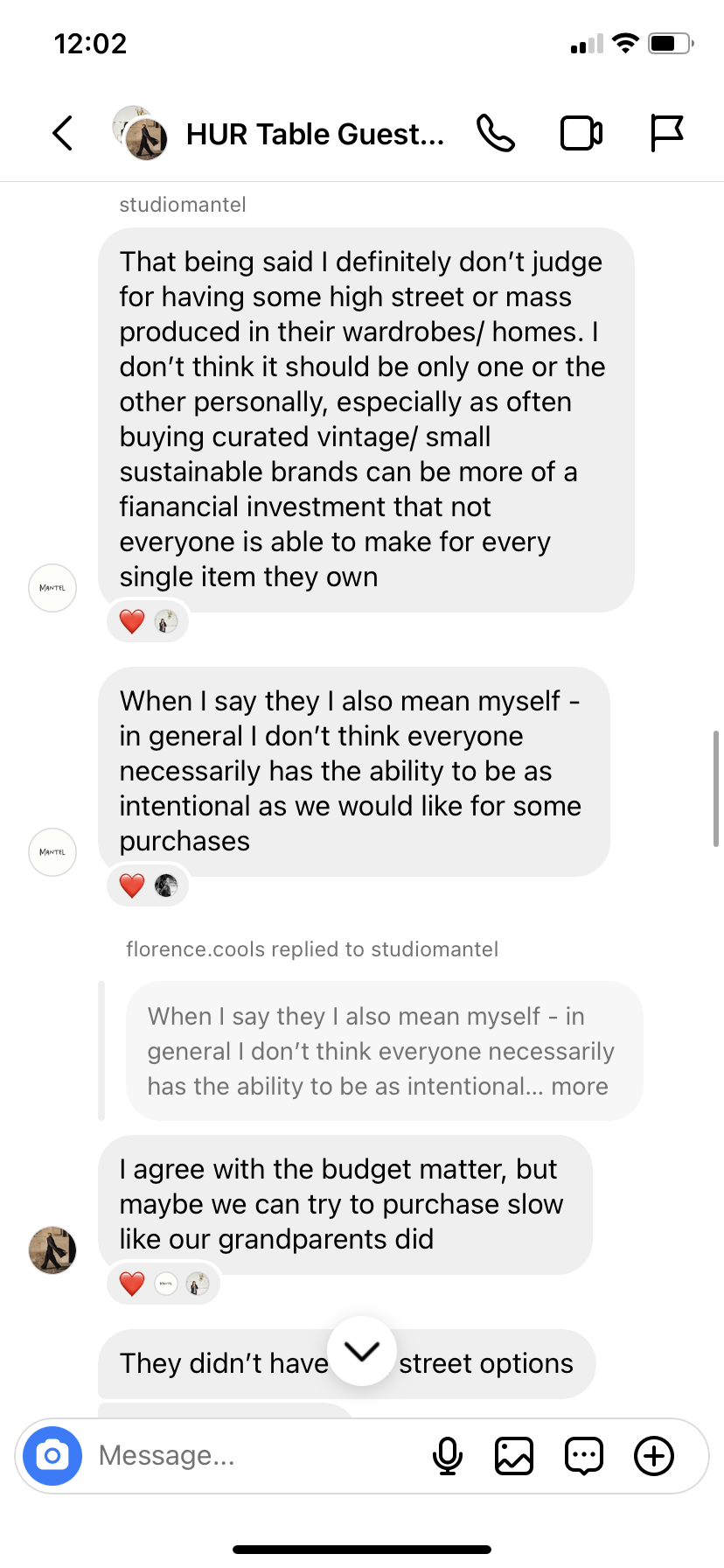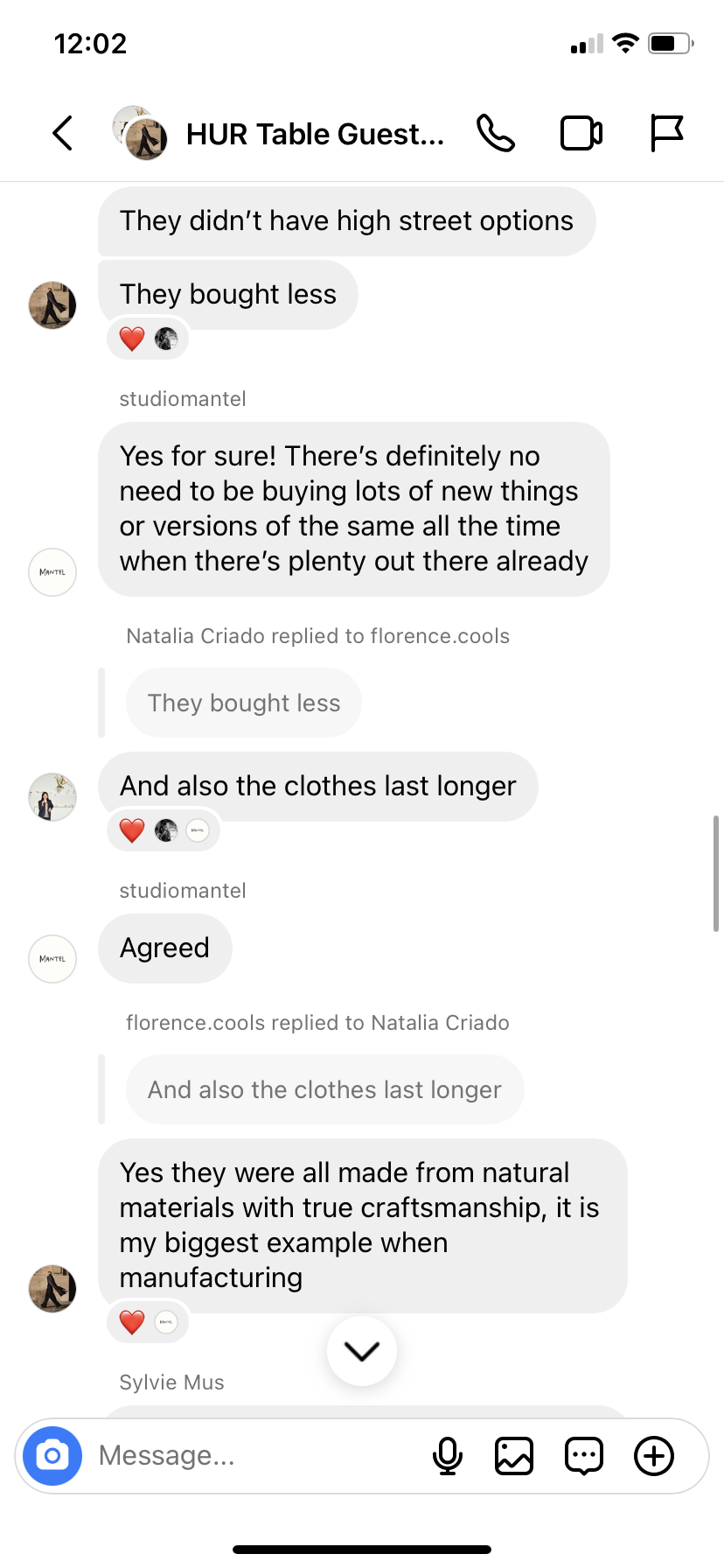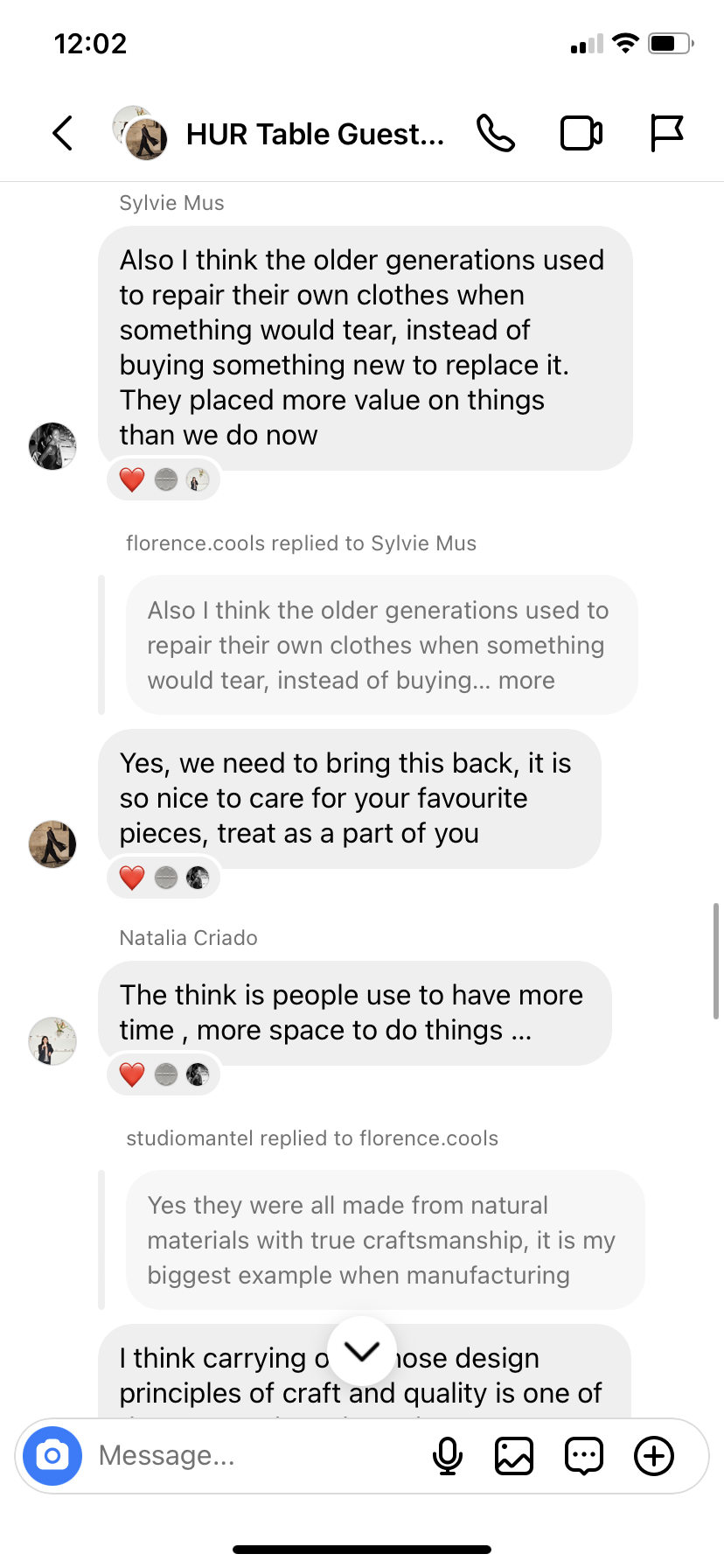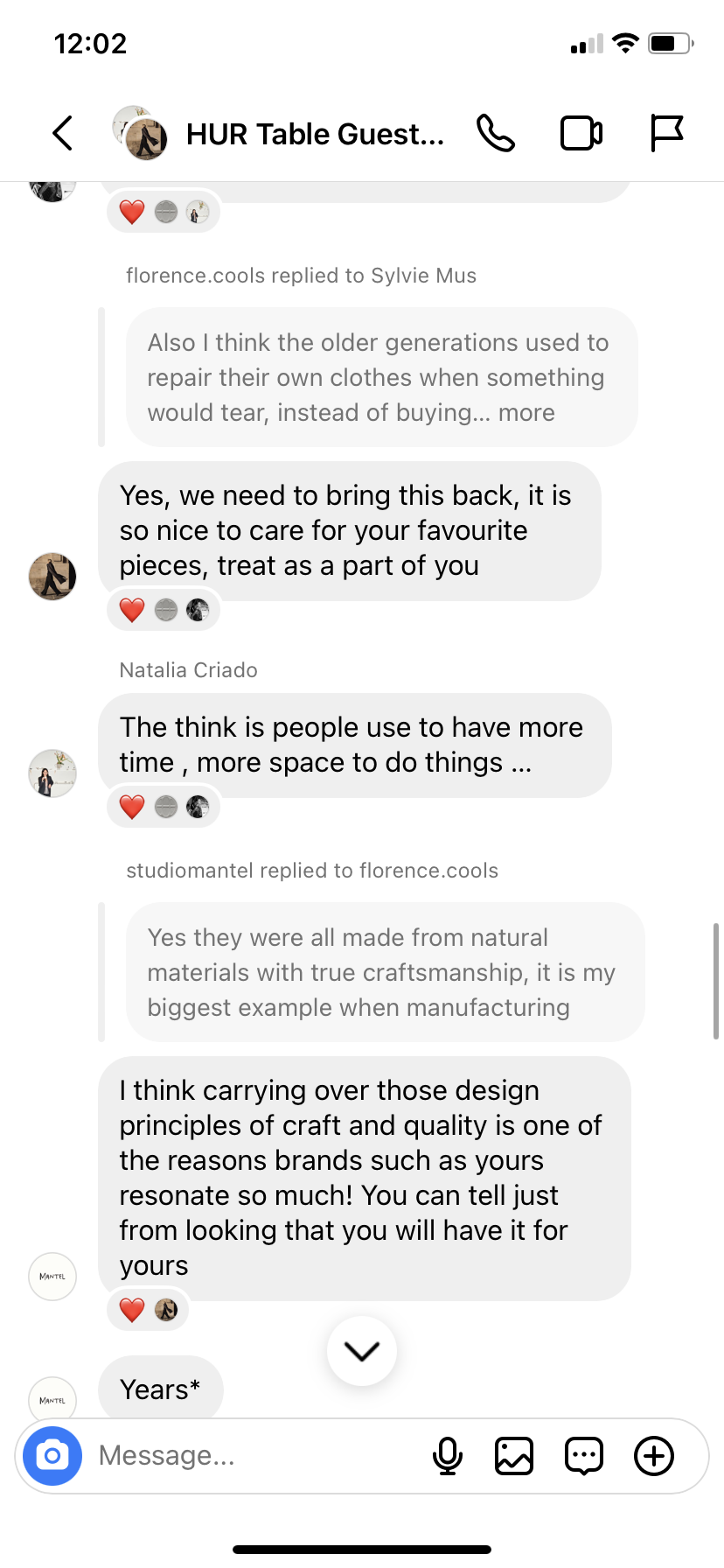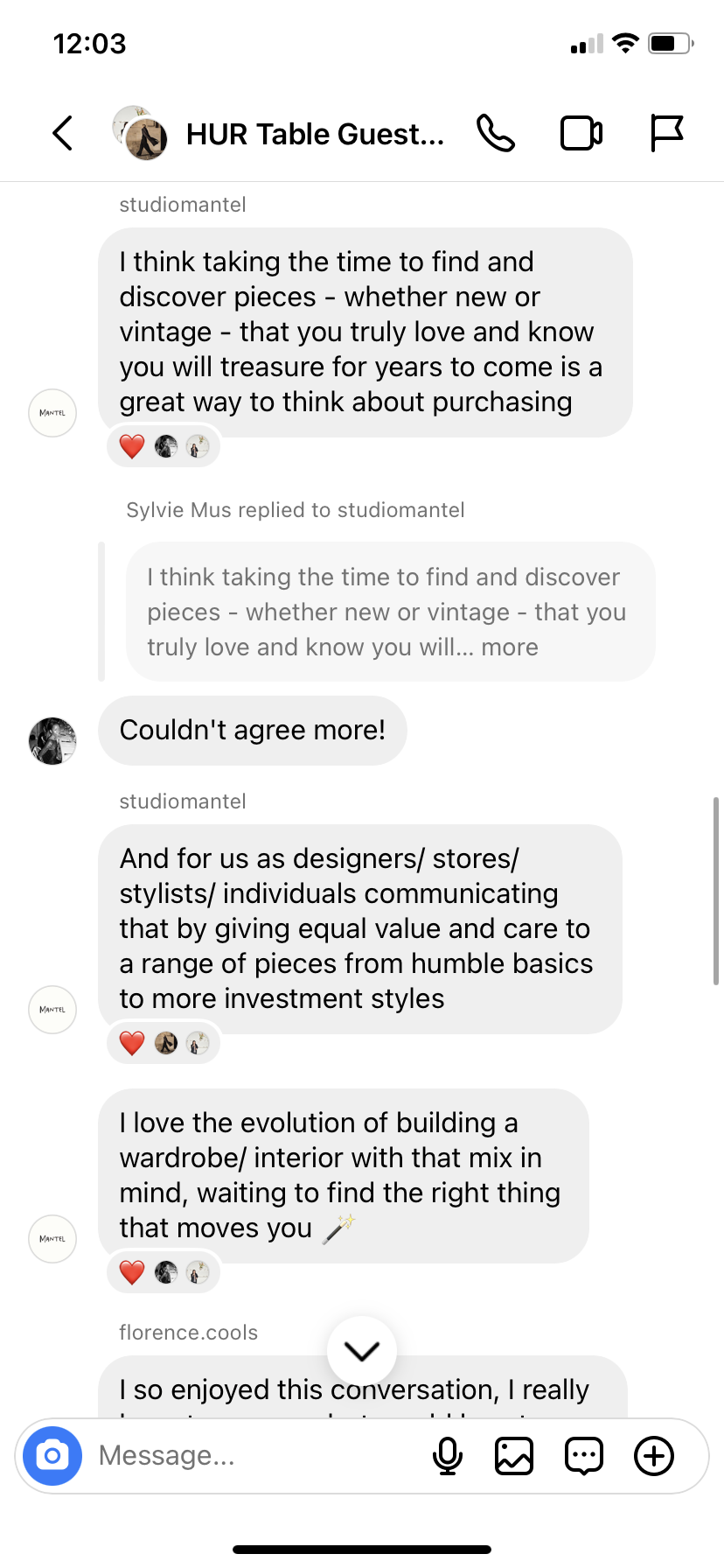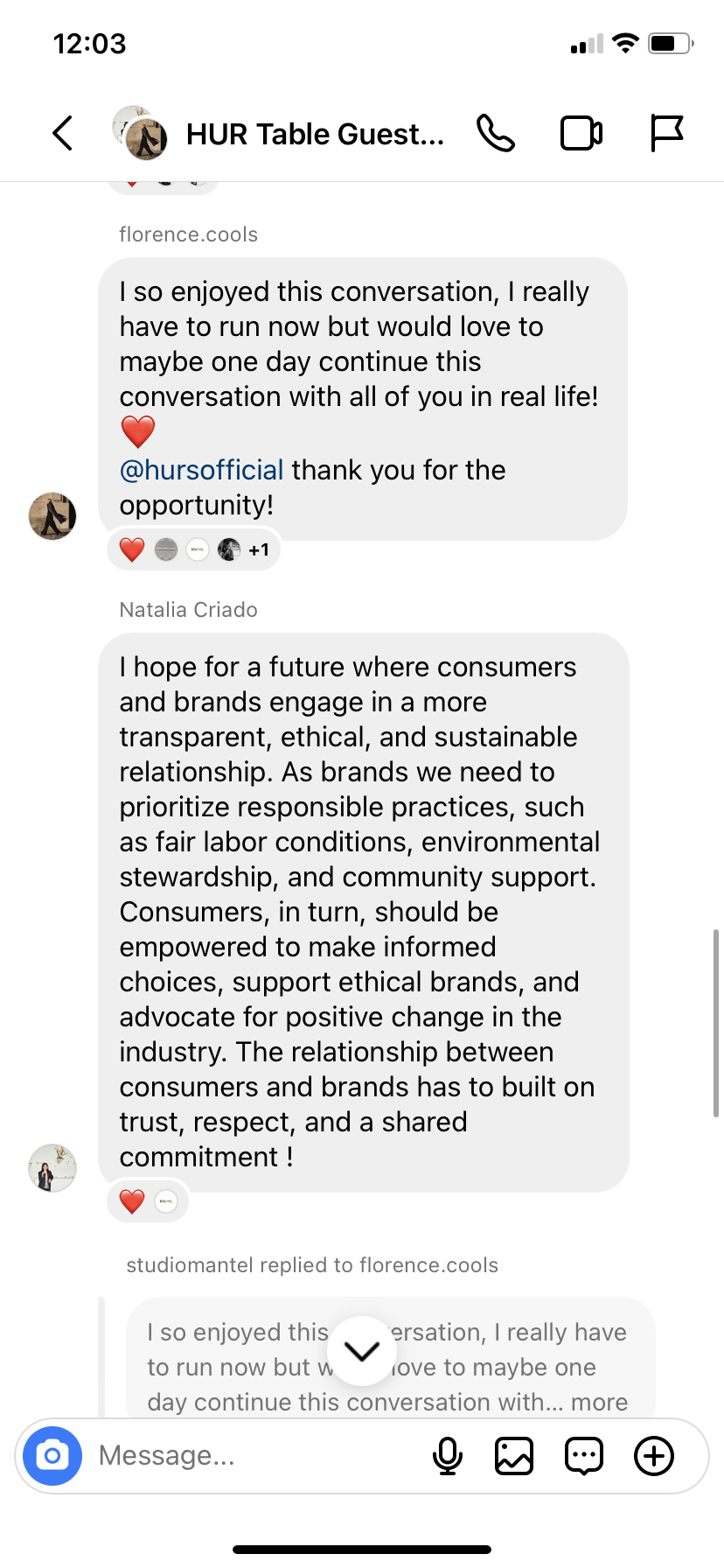Can Craft Redefine Consumer Culture?
Courtesy of Mantel
Can Craft Redefine Consumer Culture?
with Sylvie Mus, Natalia Criado, Florence Cools and Sadie Perry
By HURS team
Do you prefer a furniture piece off the shelf or made to order? A vintage Cartier watch or a new one? A hand blown glass vase or one straight from the production line? In a world where we can buy anything at any time, a select group of consumers and brands are opting for craft and expertise over trends and scale. From individuals choosing vintage or made to order pieces to brands investing into artisans and craftsmanship to the rising popularity of design fairs like Salone del Mobile, Matter & Shape and PAD, there’s a definitive shift in the relationship between consumers and the brands and products they buy. But why?
Today, what you buy means more than it used to. While it is performative, in reality many of us use social media as a tool to showcase our curated approach to life; whether it’s a picture of our carefully put together interior or the restaurant we chose to post about. The brands and products we surround ourselves with say something about who we are. Over the years, social media has become more of a starter pack culture – where everything looks the same – over a way of expressing your taste. But there’s a growing counter movement of individuals looking to express their distinct take on it all. Longing to showcase their knowledge and in-the-know-ness, they post vintage bags over new ones, and choose to invest into brands and products that up until now have stayed off the radar.
The rapid growth of the luxury industry is another piece of the puzzle. It used to be hard to get your hands on anything luxury. That’s simply no longer the case. The problem is that when things scale too quickly, they also become less desirable. To keep some of the mystique alive, many brands are trying to reclaim the narrative around craftsmanship – a term once synonymous with luxury. From Loewe’s Craft Prize to École Hermès des savoir-faire to Bottega Veneta’s Accademia Labor et Ingenium, many brands are putting their money behind craft. Partly to deliver the highest quality products but equally to remain competitive with adjacent brands and to showcase their products still hold that magic they used to.
But on a deeper level, many of us are longing for connection. Buying has become an anonymous act. And while we’re using social media as a way to exhibit our style and to follow others who align with us aesthetically, it lacks the feeling of dialogue and belonging. There’s something about owning objects that have been used or made by other humans, or that have imperfections and through it tell a story of its maker or wearer. They allow us to connect to people, brands and products in a way something new never could.
SYLVIE MUS
Originally from Helsinki, wardrobe stylist and model Sylvie Mus moved to Paris three years ago. Over the years, Mus has garnered a loyal following of tastemakers who appreciate her timeless approach to style. Often mixing vintage pieces with contemporary classics. Mus also publishes a newsletter focused on personal style and exploring a more sustainable way of getting dressed.
NATALIA CRIADO
Born and raised in Colombia, Natalia Criado quickly discovered her natural talent for design at a young age. After obtaining a diploma in industrial design at IED in Milan, Criado founded her eponymous jewelry and accessories brand in 2011. Drawing inspiration from the heritage of pre-columbian forms, Criado's works express a fusion between the cultural legacies of Colombia and Italy. Her ability to seamlessly combine contemporary design and craftsmanship, has cemented her as a leader in the design space. Creating tableware, glassware and other objects that create a dialogue between the old and the new. Through her work, Criado showcases not only her artistic vision, but also supports ancient traditions of craftsmanship.
FLORENCE COOLS
Florence Cools is the co-founder and Creative Director of Antwerp-based brand La Collection. Cools founded the brand in 2017 with Artur Tadevosian – her partner in business and life. The brand takes a slower approach to design, creating collections that build on each other through a curated collection of timeless designs. Its dedication to quality fabrics and craftsmanship combined with Cools’ distinctive eye for style, art and architecture, have made La Collection a go-to for modern women globally.
SADIE PERRY
Sadie Perry is a London based decorative design dealer and founder of Mantel, a digital store specializing in Art Deco objects & jewelry. After receiving degrees in History of Art, Design and Film and studying silversmithing in Mexico, Perry launched her eponymous brand. She combines materials and styles from her favorite periods in design and art history, including Art Deco, Modernism and Viennese Secession. Mantel is focused on the timeless, distinctive and conversational, aiming to showcase and contextualize works of design with enduring relevance that strike a balance between decorative detail, sculptural proportion and refined form. Each piece is individually selected in the UK and Europe by Perry herself.
We asked four women who value craft why a select group of consumers are taking a slower approach to consuming, how social media has influenced the meaning of what and why we buy and their hopes for the future of the relationship between consumers and brands
